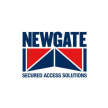How to choose the right security barrier
Physical access control starts at your perimeter. That means that your security barriers play a key role in your overall security.

Ultimately, all security is based on physical access control. This includes cybersecurity, which often rests on preventing access to key hardware. Physical access control starts at your perimeter. That means that your security barriers play a key role in your overall security. With that in mind, here are eight tips to help you choose the right one(s).
To explain further, Lucinda Thorpe, Business Development Executive At Newgate shares her insights into how to choose the right security barrier.
Start by deciding where you need security barriers
The place you want to put your security barriers will often rule out certain types of security barriers. For example, if your location doesn’t have room for a gate to swing open then you have to rule out swing gates. Determining this as soon as possible can do a lot to speed up your decision-making process.
Look at the practicalities of installation
Once you’ve worked out what you can have, look at the practicalities of installing each option. There is a strong chance that you will find some options are easier to install than others. For example, a rising-arm bollard will generally be easier to install than any kind of gate.
The fact that a certain type of security barrier is easier to install than another doesn’t necessarily mean that it’s the right choice. It is, however, a factor you should usually consider. If nothing else, the easier a security barrier is to install, the less the installation is likely to cost.
Think about maintenance (and repair) issues
Similarly, think about the practicalities of maintaining your security barrier. Again, the fact that a certain type of security barrier is easier to maintain than another doesn’t necessarily mean that it’s the right choice. It is, however, a factor you should definitely consider.
Firstly, it will probably have cost implications. Secondly, it will have at least some impact on your operations. All safety barriers will need periodic maintenance. It’s also possible that they’ll need to be repaired occasionally. The easier it is to do this, the quicker the job can be done. This reality can also have cost implications.
Assess your options for using electric barriers
At this point, arguably electric barriers should be your default option unless there is a very strong reason for them not to be. If that reason is your budget, then it could make a lot of sense to install a manual security barrier that you could electrify in the future.
Manual security barriers are certainly a lot better than nothing. Electric security barriers, however, really do take security to a new level. The main reason for this is that they can be operated remotely. This creates extra separation between your team and a potential threat. It also makes it much easier to create integrated, holistic, security systems.
For example, an electric security barrier can be operated by access fobs. It can therefore automatically create a real-time, accurate log of who opens and closes it at what time. In higher-volume environments, electric security barriers can also be used with Automatic Number Plate Recognition (ANPR) systems. This can speed up processing without compromising security.
Decide what level of security you need
In practice, the key to effective security is making an attack on you more hassle than it’s worth. How much security you need therefore depends on how valuable you are to an attacker. In some locations, it can also depend on how much security is in place already.
For example, local authorities (and some landlords) may control vehicular access to an area. If they do this effectively, you shouldn’t need to worry about vehicles being used to attack you. You may, however, still need to think about non-motor vehicles (e.g., bicycles) and pedestrians.
As with anything to do with security, if in doubt, it makes sense to err on the side of caution. Spending a little extra money on security you don’t really need usually ends up costing less than spending too little money on security you do really need.
Set out your security goals
What or who, specifically, do you need to control? To begin with, are you controlling vehicular traffic, pedestrian traffic, or both? Do you need to use the same security barrier for all traffic, or could you stream different types of traffic through different barriers?
What are the specific characteristics of the traffic? Do you want to impose any restrictions on height, width, or weight? Do you need to take any special needs into consideration? For example, if you’re planning to use turnstiles to control pedestrian traffic, you may need to offer an alternative route for wheelchair-users.
In a few, niche, situations, you may even want to consider using soft security barriers. These are barriers that are designed to be knocked over. They will generally right themselves automatically. These barriers are typically used to guide people away from hazards. The assumption, therefore, is that people will try to follow their guidance but may not always succeed.
Consider what sort of look you want
In hazardous environments such as industrial zones, the main priority tends to be straightforward visibility. In other environments, however, businesses may need to balance visibility with aesthetics.
As a rule of thumb, if your security barriers play a role in health and safety, then prioritise visibility. On the other hand, if your security barriers are more to protect assets (e.g., inventory), then you can give more weight to aesthetics. With that said, just because you can, it doesn’t mean that you necessarily should.
Making your security barriers highly visible can be a subtle but effective deterrent. It basically sends a message that you take security very seriously. You can make this message even more emphatic by partnering security barriers with other forms of security. For example, a security barrier plus CCTV plus lighting is a very powerful combination.
Remember you get what you pay for
This is as true with security barriers as it is in other areas of life. It’s always worth paying for quality, especially with anything to do with security. The nature of security barriers means that they tend to get a lot of use. Even if you’re putting a security barrier in a low-traffic area, you still need to be confident that you can rely on it when you need it.
About the Creator
Lucinda Thorpe
Lucinda Thorpe is the Business Development Executive at Newgate Newark Ltd and is responsible for monitoring market strategies and implementing changes to enhance the companies profile and exposure.


-5.jpg?fit=max&fm=jpg&ixid=MnwzNTY3MHwwfDF8YWxsfHx8fHx8fHx8MTY0ODcyNTE3OA&ixlib=rb-1.2.1&q=75&w=720&utm_medium=referral&utm_source=vocal.media)



Comments
There are no comments for this story
Be the first to respond and start the conversation.